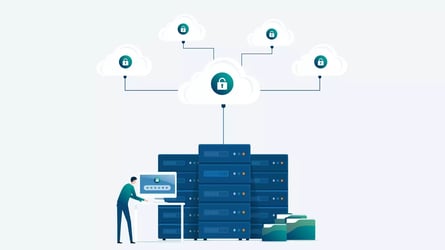By Peter Ely — Channel Marketing Manager, KeepItSafe®
Have you seen that amazing new TV commercial where the guy drops a high-end enterprise server into a lake — and then they fish the thing out, plug it in, and show you that all of the data survived intact?
Of course you haven’t. That commercial doesn’t exist. Servers don’t do that.
(And if you do see a guy throwing a server into a lake, he’s not filming a TV commercial; he’s destroying evidence.)
I bring this up because, as an IT professional, you no doubt devote a good amount of time to anticipating and preparing to respond to a myriad of technology-related threats to your business — your IT architecture falling behind the competitive curve on capability and efficiency, cyber attacks against your network, etc.
But your company's mission-critical data being wiped away in a flood? I’m guessing you don’t spend many cycles fretting over that.
The Baton Rouge Flood: Time to Re-Examine Your Data Backup Protocols
Of course, you’d be fretting plenty over the potential for catastrophic corporate data loss in these last weeks if your business were located in Baton Rouge. For businesses of all sizes, in all industries, the 2016 Louisiana flood provides a stark reminder of the need for bulletproof, redundant backup of your mission-critical data.
Many businesses — even large, industry-dominant enterprises with sophisticated IT teams — continue to invest in expensive, high-end data backup systems, which they maintain entirely onsite.
Given that some of these enterprises are in heavily regulated industries, or maintain highly sensitive data and hard-earned intellectual property, their inclination to keep all of this data “in-house” is understandable. But as the Louisiana flood illustrates, it’s also extremely dangerous.
If there is a lesson for businesses in the 2016 flood, it’s that you cannot afford to keep your corporate data in just one location — because disasters happen.
What if Your Offsite Data Center Were Located in Baton Rouge?
Now, you might be thinking, Well, that wouldn’t apply to our company because we already keep our data in an offsite data center. Fair enough. And if you do back up your data to an offsite location, then in terms of data protection you’re a step ahead of those companies keeping their only digital copies of everything on in-house servers. But this begs the question: What would happen to your backed-up data if your offsite data center were located in Baton Rouge?
No data backup provider, no matter how successful or trustworthy, can guarantee you that any one of its locations is in a disaster-free zone — where no floods, fires, earthquakes, tornadoes, crippling power outages or other catastrophes could harm its facilities.
Like the comedian who asks, “Hey, since they always seem to find the black box intact after a plane crash, why don’t they just make the whole airplane out of that same stuff” you’d have to wonder, “Hey, if such a disaster-free zone really existed, why wouldn’t everyone move there?”
This is all a way of saying that even if you’ve moved your data to a cloud backup service, you might not have fully solved your company’s data protection problem — not if that backup provider itself maintains your corporate data in only one physical location.
After all, if that single data-backup location suffered a Baton Rouge-caliber flood, and your data were maintained only at that location, then you and those companies keeping all of their data in-house would essentially be, for lack of a better phrase, in the same boat. (Sorry — bad flood humor.)
You Need a Geographically Redundant Cloud Backup Solution
What this means is that the only cloud backup solution worthy of safeguarding your corporate data is one built on a large, geographically dispersed network of data backup facilities — where you can, at all times, maintain multiple copies of your data across several of these geographically distinct data centers.
But even that is only one component of truly safe, redundant data protection. You’ll also want to deal only with a cloud backup provider that can guarantee you the ability to restore 100% of your lost data from one of its locations quickly, in the event disaster ever does strike. If you lose data or access to a network that your business needs to maintain ongoing operations, you don’t want to have to wait days or weeks for your backup provider to get you back up and running.
And finally, you’ll want to demand that your cloud backup provider not merely store copies of your data on its cloud and then leave it there unattended — but that it maintain a team of trained support engineers actively monitoring your data around the clock, ready to take action to protect it at the first sign of trouble.





